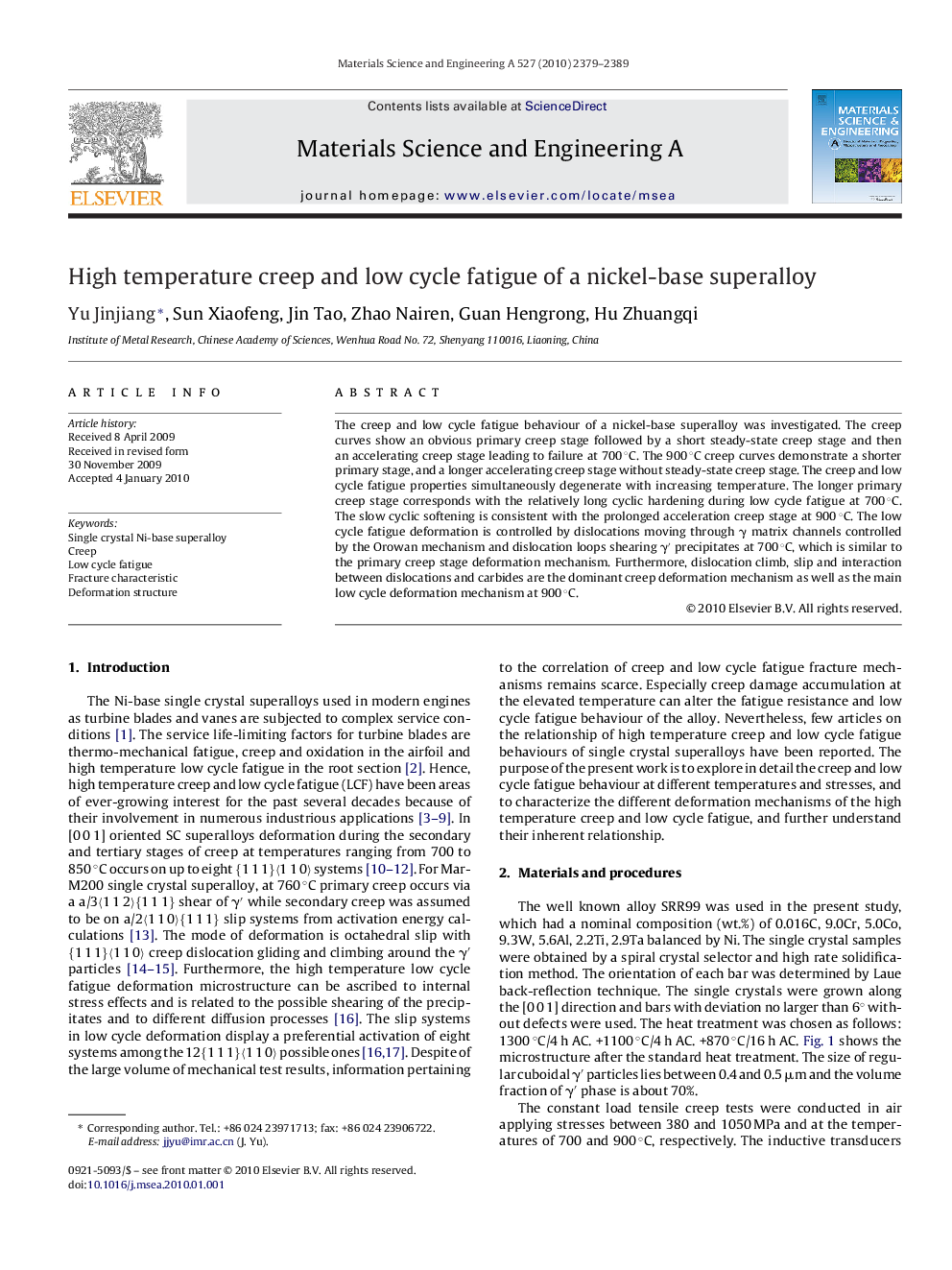| Article ID | Journal | Published Year | Pages | File Type |
|---|---|---|---|---|
| 1579832 | Materials Science and Engineering: A | 2010 | 11 Pages |
The creep and low cycle fatigue behaviour of a nickel-base superalloy was investigated. The creep curves show an obvious primary creep stage followed by a short steady-state creep stage and then an accelerating creep stage leading to failure at 700 °C. The 900 °C creep curves demonstrate a shorter primary stage, and a longer accelerating creep stage without steady-state creep stage. The creep and low cycle fatigue properties simultaneously degenerate with increasing temperature. The longer primary creep stage corresponds with the relatively long cyclic hardening during low cycle fatigue at 700 °C. The slow cyclic softening is consistent with the prolonged acceleration creep stage at 900 °C. The low cycle fatigue deformation is controlled by dislocations moving through γ matrix channels controlled by the Orowan mechanism and dislocation loops shearing γ′ precipitates at 700 °C, which is similar to the primary creep stage deformation mechanism. Furthermore, dislocation climb, slip and interaction between dislocations and carbides are the dominant creep deformation mechanism as well as the main low cycle deformation mechanism at 900 °C.
